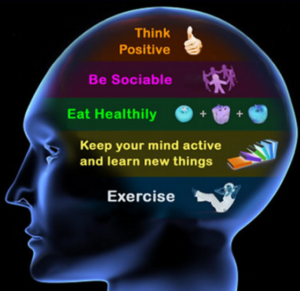 Hypnosis is synonymous with stage entertainment where the performer puts volunteers from the audience into a trance and commands them to do embarrassing things.
Hypnosis is synonymous with stage entertainment where the performer puts volunteers from the audience into a trance and commands them to do embarrassing things.
This makes it sound like a joke, but in fact hypnosis is a real phenomenon and it is proving increasingly useful to psychologists and neuroscientists, granting new insights into mental processes and medically unexplained neurological disorders.
That’s according to David Oakley and Peter Halligan who have written an authoritative new review, debunking hypnosis myths, and covering ways that neuroscience is shedding light on hypnosis and ways hypnosis is aiding neuroscience.
Despite popular folklore, hypnosis is not a form of sleep (this misconception isn’t helped by the fact that hypnosis studies typically label the control condition the “waking state”). However, Oakley and Halligan say new brain imaging findings do support the contention that hypnosis is a distinct form of consciousness.
After successful hypnotic induction, which involves using mental strategies to reach “a focused and absorbed attentional state”, participants show reduced activity in parts of the brain’s default mode network together with increased activity in prefrontal attentional systems. Oakley and Halligan concede that “it remains to be seen if these particular changes are unique to hypnosis.”
After hypnotic induction (or in some cases even without it) participants exposed to suggestive statements can experience altered perceptual or bodily sensations.
For instance, told that their arm is getting heavier and they cannot move it, a suggestible participant may experience paralysis of the arm. Sceptics may wonder  about the veracity of these experiences but brain imaging results are indicating they are real and not merely imagined.
about the veracity of these experiences but brain imaging results are indicating they are real and not merely imagined.
Consider a study of participants hypnotized and induced to see colorful Mondrian images in grey. Brain scan results of these participants showed altered activity in fusiform regions involved in color processing, and crucially such changes weren’t observed when the participants merely imagined the Mondrians in grey.
Another study showed that the famous Stroop effect disappeared when hypnotized participants received the suggestion that they would see words as meaningless symbols.
Another line of research explores the correlates of hypnotic suggestibility. Apparently, it is a highly stable trait and it is heritable.
It doesn’t correlate with the main personality dimensions but does correlate with creativity, empathy, mental absorption, fantasy proneness and people’s expectation that they will be prone to hypnotic procedures.
 Many neurological symptoms are medically unexplained with no apparent organic cause and it is here that hypnosis is proving especially useful as a new way to model, explore and treat people’s symptoms.
Many neurological symptoms are medically unexplained with no apparent organic cause and it is here that hypnosis is proving especially useful as a new way to model, explore and treat people’s symptoms.
For instance people can be hypnotized to experience limb paralysis in a way that appears similar to the paralysis observed in conversion disorder.
People can also be hypnotically induced to experience the sense that there is a stranger looking back at them when they peer in a mirror – an apparent analogue of the real “mirrored-self-misidentification delusion”.
Hypnosis research is also exposing the apparent volitional element to mental phenomena previously considered automatic.
For example, a patient who experienced face-color synaesthesia received post-hypnotic suggestion that abolished the colors she usually sees with faces (as confirmed by a color-naming task in which faces no longer had an interfering effect).
“The psychological disposition to modify and generate experiences following targeted suggestion remains one of the most remarkable but under-researched human cognitive abilities given its striking causal influence on behavior and consciousness,” said Oakley and Halligan. (Oakley DA, and Halligan PW 2013)








